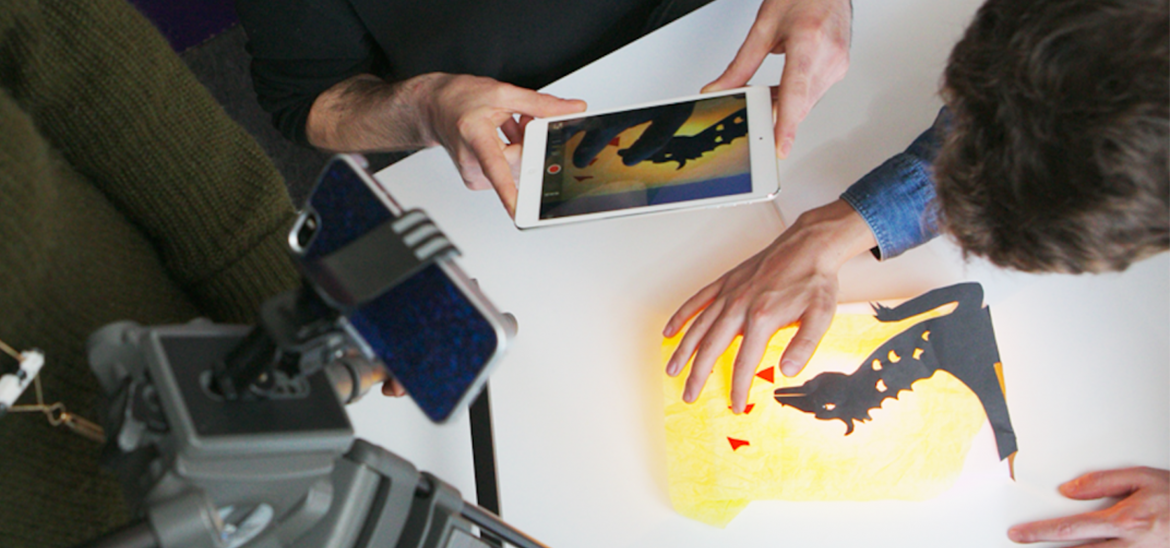Into Film Clubs
Find out everything you need to know about starting an Into Film Club.



Into Film Teacher of the Year 2016 Simon Pile gives his advice on incorporating filmmaking into the classroom in a new three part series. Simon is not only the Assistant Headteacher at Anson Primary School in London, but has also been running their film club since 2009 - so he certainly knows a few things about the benefits of film and filmmaking.
Part one looks at why it's key to get members of staff motivated, and how best to inspire them to use filmmaking in the classroom through creating their own short films.
At Anson Primary we use film as a teaching tool right across the curriculum to boost literacy, motivate students and raise attainment. Filmmaking is a big part of this, encouraged, each year, by our own in-school Film Festival.
A key aspect of a successful filmmaking programme is getting the staff on board. Filmmaking with 30 children can be daunting as the immediate fear of most teachers is, "Oh my goodness, I'm going to need to edit these films using software I don't understand in a classroom full of children I can't control!"
It doesn't need to be this way.
One of the most successful ways to make staff feel like they are the experts is to put them in the shoes of the learner and show them how simple the filmmaking process can be.
Firstly it's important to remove the fear. What you want is for the teachers to feel like professional filmmakers without the need to edit, add titles or find soundtracks for their films.
Secondly you want them to base their films on simple filmmaking techniques they can copy. They will find it easier to replicate something they have seen. It's a little like that fear writers have of the blank page. They can stare at it for ages, stuck for ideas and write nothing. Teachers new to filmmaking feel the same. We give children scaffolding to support their writing. We need to give filmmakers scaffolding to support their creativity too.
So, what techniques could you use? Here are three ideas:
The Lumiere Brothers were masters of early filmmaking in the late 1890s. They had one static camera and shot scenes such as snowball fights or gardening. We challenged our staff to create a simple one minute film. They were encouraged to pick up their phone, turn it landscape and film for 60 seconds. They could film anything that interested them.
We had films shot at bus stops, films of trains leaving platforms, films of floating leaves and films of water.
Time lapse films are easy to make with modern mobile devices. The idea is to explore how an area, a scene or even the light changes over time in your local area. Teachers are encouraged to film an area, using time lapse settings, for at least one hour, leaving the camera in a static position once again. The results can be incredible, with stunning sunsets, science experiments or even the movement of shadow.
Creating films in the style of Georges Méliès is best done in a whole school INSET. They are so much fun. Méliès used camera trickery in the early 1900s to make objects appear and disappear. Using the pause feature on a camera these same tricks can be easily replicated. As a simple example you can film someone walking behind a tree. Press pause. Move the person behind the tree to behind the camera. Then start recording again and move the camera behind the tree. Wow! The person has disappeared! We've seen some great creativity using this technique!
These activities are simple and will help teachers become confident with the filmmaking process. All you need now is an audience for the films.
We launch our annual Film Festival with a Teacher Showcase. This involved showcasing the teachers' films in a special assembly and then asking members of our Film Club Council to interview the teachers on stage about their film.
The impact is amazing. Confident teachers. Inspired children. A whole school ready to celebrate film.
Viewing 4 of 4 related items.

Find out more about our streaming service, designed specifically for UK schools.